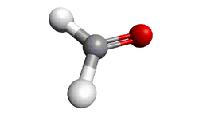Formaldehyde, doubly deuterated isotopologue with 18O
 | |
|---|---|
| Species tag | 034505 |
| Version | 1* |
| Date of Entry | Jan. 2016 |
| Contributor | H. S. P. Müller |
|
Transition frequencies with microwave accuracy were
determined by | |
| Lines Listed | 1438 |
| Frequency / GHz | < 2000 |
| Max. J | 62 |
| log STR0 | -7.0 |
| log STR1 | -6.0 |
| Isotope Corr. | -10.319 |
| Egy / cm–1 | 0.0 |
| µa / D | 2.347 |
| µb / D | |
| µc / D | |
| A / MHz | 141649.3 |
| B / MHz | 30594.80 |
| C / MHz | 25064.16 |
| Q(300.0) | 4001.7436 |
| Q(225.0) | 2598.8145 |
| Q(150.0) | 1415.0323 |
| Q(75.00) | 501.3329 |
| Q(37.50) | 178.1510 |
| Q(18.75) | 63.7094 |
| Q(9.375) | 23.5209 |
| Q(5.000) | 10.3549 |
| Q(2.725) | 5.2039 |
| detected in ISM/CSM | no |